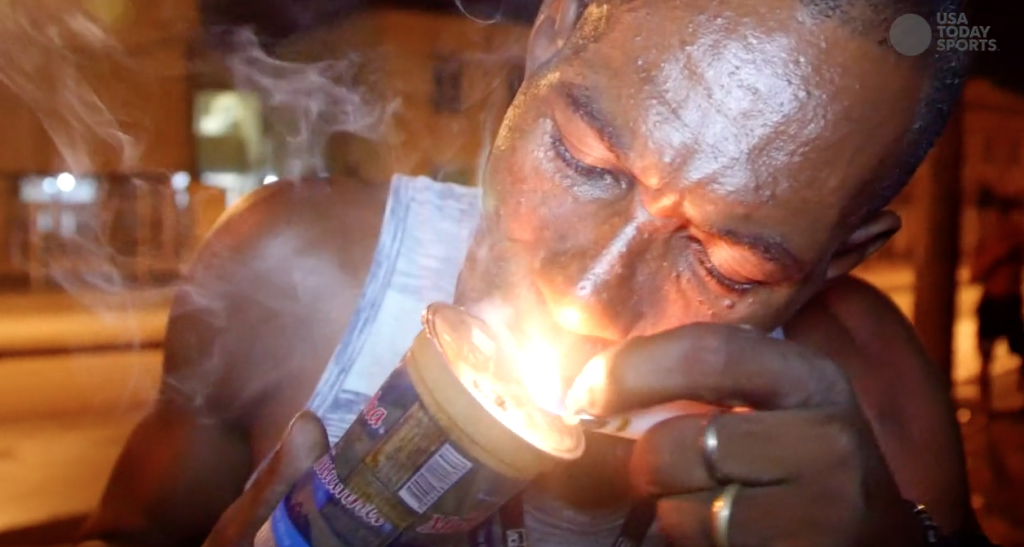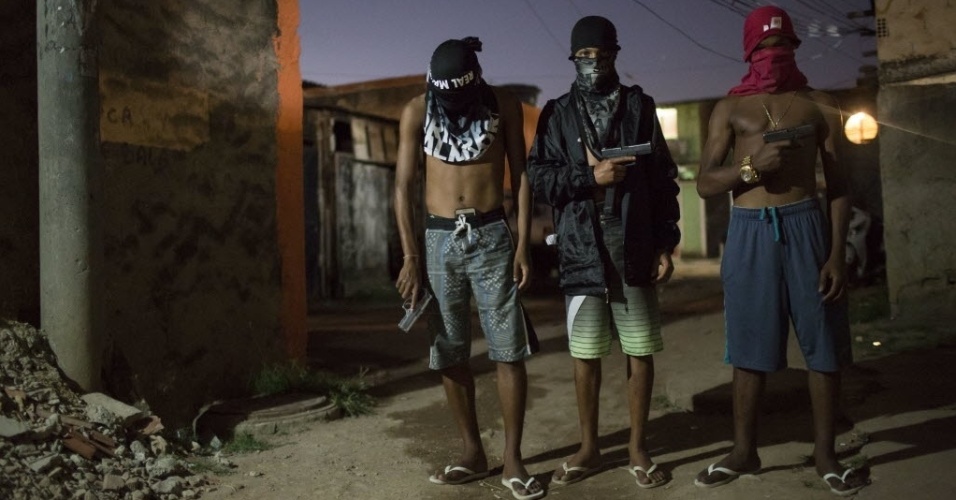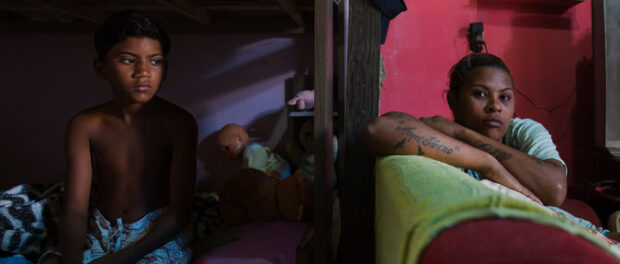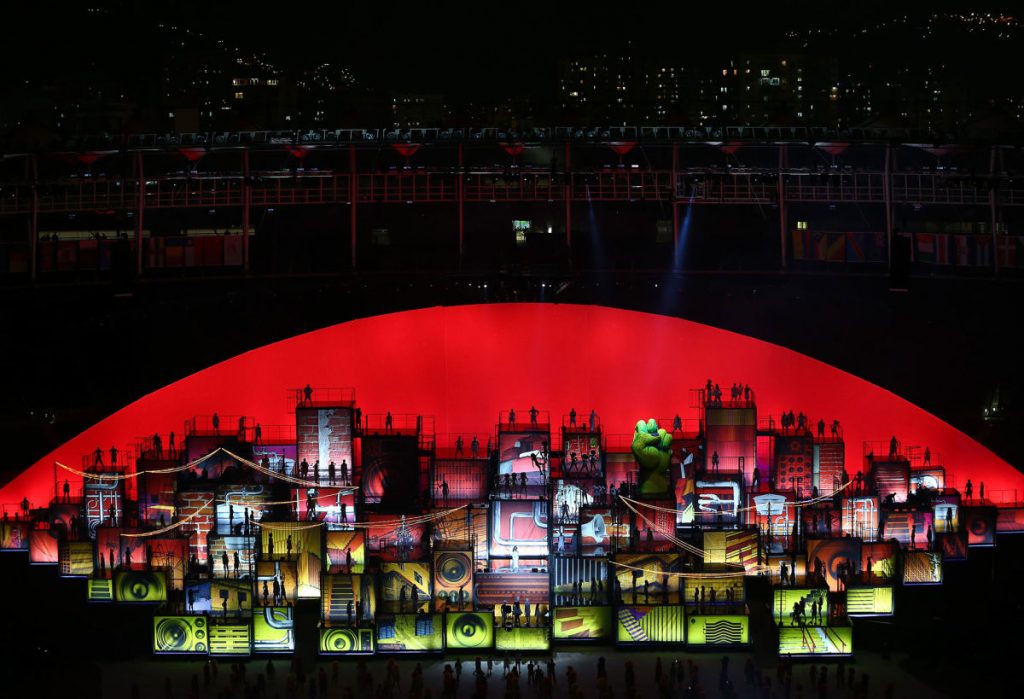
This is the latest contribution to our media watchdog series on the Best and Worst International Reporting on Rio’s favelas, part of RioOnWatch’s ongoing conversation on the media narrative and media portrayal surrounding favelas.
The international media is aflutter with assessments of the Olympic Games, but how did the media themselves fare in reporting on the city of Rio and its favelas?
The words “slum” and “shantytown” were unfortunately back in full force during the Games, as “parachute” journalists less familiar with Rio struggled to explain favelas to foreign audiences. A large number of articles covered athletes visiting favelas, and while Olympians like basketball star Carmelo Anthony had only positive things to say about Santa Marta, the journalists reporting on his visit often supplemented his reflections with stigmatizing assumptions.
Still, we saw more media than ever before taking pains to explicitly debunk favela stereotypes, including high-profile programs like NBC’s The Today Show. Experienced Rio correspondents and other insightful reporters refused to get swept away entirely by Olympic euphoria, keeping a spotlight on critical issues facing favelas and highlighting these communities’ qualities alongside their challenges. Here’s our take on the best and worst favela reporting from the Olympics.
The Worst
In one of the more mind-boggling and careless factual errors we’ve seen, a USA Today video claimed that 40% of Rio’s favela residents use crack. The claim appears to be informed by a church minister working with crack users who can be heard stating that statistic in Portuguese, but the video’s English-speaking narrator presents it as a fact, rather than a direct quote. This is an absurd claim, as even the number of regular crack users across all Brazilian capital cities does not add up to 40% of Rio favela residents, and crack use is not limited to low-income areas. USA Today’s gross exaggeration is a fundamentally unproductive misrepresentation of favelas, while the article overall does little to destigmatize addiction.
An article on Sporting News suggests that “freak-out[s]” about security threats in Rio are valid “because the pleasant neighborhoods are always hugged by the vicious poverty that has come to define the city’s favela—slums, essentially—communities.” It’s unclear who gave this author the authority to pronounce what defines favelas, especially since he appears not to have visited one or spoken to residents for this piece. Meanwhile, contrasting favelas with “pleasant neighborhoods” smacks of elitism that is blind to the culture, innovation, and community that also could “define” favelas. The author describes “spillover violence from the favelas” without a nod to the country’s systemic violence that has spilled over from the pre-colonial era into modern Rio to continuously marginalize poor, black favela residents. The lack of context is unsurprising, given the main source for this article is a “security expert” who spent a whole “two weeks” in Rio before the Olympics.
A short AP article accompanying a series of photos suggests poverty, drugs and violence “dominate life” in Rio’s favelas, described as “grim slums” and “shantytowns.” While the failures of the state pacification policy are important to highlight, this article leaves readers with the impression there is little else to favelas outside of drug traffickers’ conflicts, which belies the fact that less than 1% of favela residents are involved in drug trafficking. Image captions identify where each photo was taken, but the article itself says “gruesome scenes of death and impunity play out daily in Rio’s hundreds of shantytowns,” as if all favelas experience the same levels of violence and in the same way. In reality, most favelas have no trafficking influence at all, while some others have a trafficking presence but little conflict.
In a double-whammy headline, a Christian Today article calls favelas both “crime-infested slums” and a “center of witchcraft.” The claims of witchcraft are likely an ugly attack on Candomblé, a traditional Afro-Brazilian religion which has faced immense prejudice in Brazil for centuries. The report’s depiction of visitor-friendly favela Santa Marta as the city’s “most violent section” where “most… husbands are in prison” is about as inaccurate as its labeling of Rio as the “Brazilian capital.” The blatant criminalization of the community’s residents is exactly the kind of reporting that serves to justify violent state policies against favelas.
Ten days into the Games, former Brazil correspondent Roger Cohen wrote in The New York Times that he was “tired, very tired, of reading negative stories about these Brazilian Olympics—the anger in the slums, the violence that continues…, the enduring gulf between rich and poor,” and so forth. Does Cohen not realize that Rio’s favela residents, too, are “tired, very tired” of violence? He prioritizes his own privileged desire to indulge in uplifting sports stories, unperturbed by pesky societal inequalities, over the urgent need of Rio residents to draw international media attention to their long-term struggles. Asking for a blackout on negative stories is to dismiss millions of people’s experiences of the impacts of these Games. To write unequivocally and without evidence, as Cohen does, that “these Olympics are good for Brazil and good for humanity” is to abandon journalistic nuance entirely.
The Best
Matt Sandy’s report “Rio de Janeiro’s Forgotten Legacy of Slavery Shadows the Olympics” for TIME magazine is a vital exploration of Rio’s history of slavery in the context of the Olympic port developments on the site where two million enslaved Africans arrived and Brazil’s problematic relationships to race and labor remain ongoing. Thoroughly researched and based on interviews with a range of experts and local residents, the article is an essential look at the ways in which Rio’s history of slavery is remembered, forgotten and impacts the city today. Bloomberg coverage of the heavy corporate presence in the revitalized Port in contrast to the “sidelined” slave history provides further excellent analysis on this topic.
Johnny Harris’ superb video report “Inside Rio’s favelas, the city’s neglected neighborhoods” for Vox is an explicitly stigma-busting look at the city’s favelas. Ambitious in scope, visually arresting and masterfully produced, the video is a fast-paced and dynamic journey through favelas across the city, covering the history, definition, qualities and most strikingly, creativity of Rio’s favelas. Harris doesn’t gloss over the problems of drug gang and police violence, but makes a nuanced and persuasive case for these being the least interesting frame through which to view and understand these vibrant communities.
Simon Romero’s New York Times’ report “Beyond Olympic Glow, a Vicious Drug War Rages in Rio” exposes the terrifying reality of violence faced by residents of Complexo do Alemão in the North Zone during the Olympic Games. Police operations and shootouts have intensified in recent weeks, yet the media focus has been squarely on the Games and the security operation to make the city safe for visitors. Romero’s report highlights the security crisis in Alemão with the vital focus on the experience of residents living amidst the violence. NPR’s Lulu Garcia-Navarro and The Guardian‘s Jonathan Watts deserve similar credit for forefronting resident perspectives of ongoing violence.
Olga Khazan’s report “A Cheap, Easy Fix to Rio’s Sewage Problem” for The Atlantic gives important visibility to Rio’s endemic sanitation problems and the small-scale solution of biodigesters that could solve it. Focusing on the case study of the Vale Encantado favela in the Tijuca Forest where a sewage-treating biosystem has been successfully installed, Khazan explains the biodigestor technology, its benefits and difficulties and provides essential context on the systemic challenges which could prevent widespread implementation.
David Biller and Michael Smith’s longform article “Rio Promised to Clean Up Guanabara Bay Before the Olympics” in Bloomberg is an incredible feat of investigative reporting which tells the story of Priscila de Goes Pereira, a dedicated administrator at the agency responsible for the Guanabara Bay cleanup who was murdered in 2015. Through Pereira’s tragic story, told through extensive interviews with her friends, family and co-workers, the article elucidates Rio’s scandalous failure to clean up the Guanabara Bay despite receiving millions from the Inter-American Development Bank.
Alex Cuadros’ article “Brazil’s Olympics Meet Its Favelas” for The New Yorker explores the inherent tension between the Olympic opening ceremony’s celebratory representation of favelas and the government treatment of these communities in the run up to the Games. Looking at the failure of the Pacifying Police Unit (UPP) program and the city’s forced evictions policy, Cuadros features the resident stories which highlight the contradiction in presenting favela culture in the Games’ opening spectacle while neglecting and destroying the communities that gave rise to these artforms.
Other highly recommended pieces from this Olympic period include HBO’s Real Sports with Bryant Gumbel‘s examination of the wake of destruction left from city to city by the IOC, Jonathan Watts’ report on the poor working conditions and pay for cleaners at the Athletes’ Village, and Aaron Gordon’s hard-hitting critique of the Olympics.




